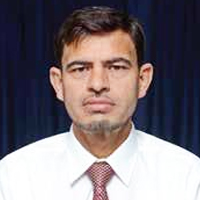Left Atrial Remodeling is Associated with Left Ventricular Remodeling in Patients with Reperfused Acute Myocardial Infarction
Published on: 7th December, 2016
OCLC Number/Unique Identifier: 7286353354
Background: Left atrial volume (LAV) has been established as a sensitive marker of left ventricular (LV) diastolic function and as an independent predictor of mortality in patients with acute myocardial infarction (AMI). LA remodeling and its determinants in the setting of AMI have not been much studied.
Methods: We studied 53 patients with anterior AMI and a relatively preserved LV systolic function, who underwent complete reperfusion and received guidelines guided antiremodeling drug management. LA and LV remodeling were assessed using 2D echocardiography at baseline and 6 months. LAV indexed for BSA (LAVi) was used as the index of LA size and further LA remodeling.
Results: LAVi increased signifi cantly at 6 months compared to baseline [28.1 (23.0-34.5) vs 24.4 (19.5- 31.6) ml/m2, p=0.002] following LV end diastolic-volume index change [56.8 (47.6-63.9) vs 49.5 (42.0-58.4) ml/m2, p=0.0003]. Other standard LV diastolic function indices did not show any signifi cant change. Univariateanalysis showed a strong positive correlation of LAVi change with BNP levels at discharge, LV mass index and LV volumes indices change, throughout the follow up period. Multivariate regression analysis revealed that BNP plasma levels was the most important independent predictor of LA remodeling (b-coef.=0.630, p=0.001).
Conclusions: Despite current antiremodeling strategies in patients with AMI, LA remodeling is frequently asssociated with LV remodeling. Additionally LAVi change in the mid-term reflects better than standard echocardiographic indices LV diastolic filling impairment.
Heart Failure with preserved Ejection Fraction (HFpEF); A Mexican cohort from Mexican Institute of Social Security (IMSS)
Published on: 28th January, 2019
OCLC Number/Unique Identifier: 7991667293
Background: Several epidemiologic studies indicate that up to 50% of patients with heart failure have a preserved ejection fraction, and this proportion has increased over time. The knowledge of its severity and associated comorbidity is determining factor to develop adequate strategies for its treatment and prevention. This study was focus on the creation of a cohort and follow-up of Mexican population and to analyze its severity as well as its interaction with the comorbidity of other cardiovascular risk factors.
Methods: We included patients from different sites of Mexico City than were sent to the Cardiology hospital of the National Medical Center in Mexico City for the realization of an echocardiogram as part of their assessment by the presence of dyspnea, edema, or suspicion of hypertensive heart disease. Complete medical history, physical examination and laboratory studies including Brain Natriuretic Peptide (BNP) serum levels were performed. Diagnosis of diastolic dysfunction was based on symptoms and echocardiographic data including time of deceleration, size of left atrium, e´ septal and e´ lateral, as well as E wave, A wave and its ratio E/A. All patients had left ventricle ejection fraction > 45%.
Results: We included 168 patients with HFpEF. The most common risk factor was hypertension (89.2%), followed by overweight and obesity (> 78.5%), dyslipidemia (82.1%) and diabetes (42.8%). Women were dominant, 108 (64.3%); the mean age was 63 years old. When we classify by severity of diastolic dysfunction, we found that 41.1% were grade I, 57.1% were grade II and only 1.8% were grade III. The risk factors most strongly associated with the severity of diastolic dysfunction were hypertension, obesity and dyslipidemia. We found BNP levels highly variables, but the levels were higher detected as the ejection fraction was approaching to 45%. At one year of follow up mortality was not reported.
Conclusion: HFpEF is a frequent entity in patients with cardiovascular risk factors in Mexico. The most common risk factor was hypertension. The combination of hypertension, overweight and dyslipidemia predicted the severity of diastolic dysfunction. We recommend that all Mexican patient with hypertension and overweight or obesity should be submitted as a part of its medical evaluation to an echocardiogram study in order to detect diastolic dysfunction even though the signs or symptoms are or not evident.
















